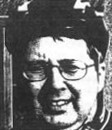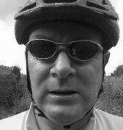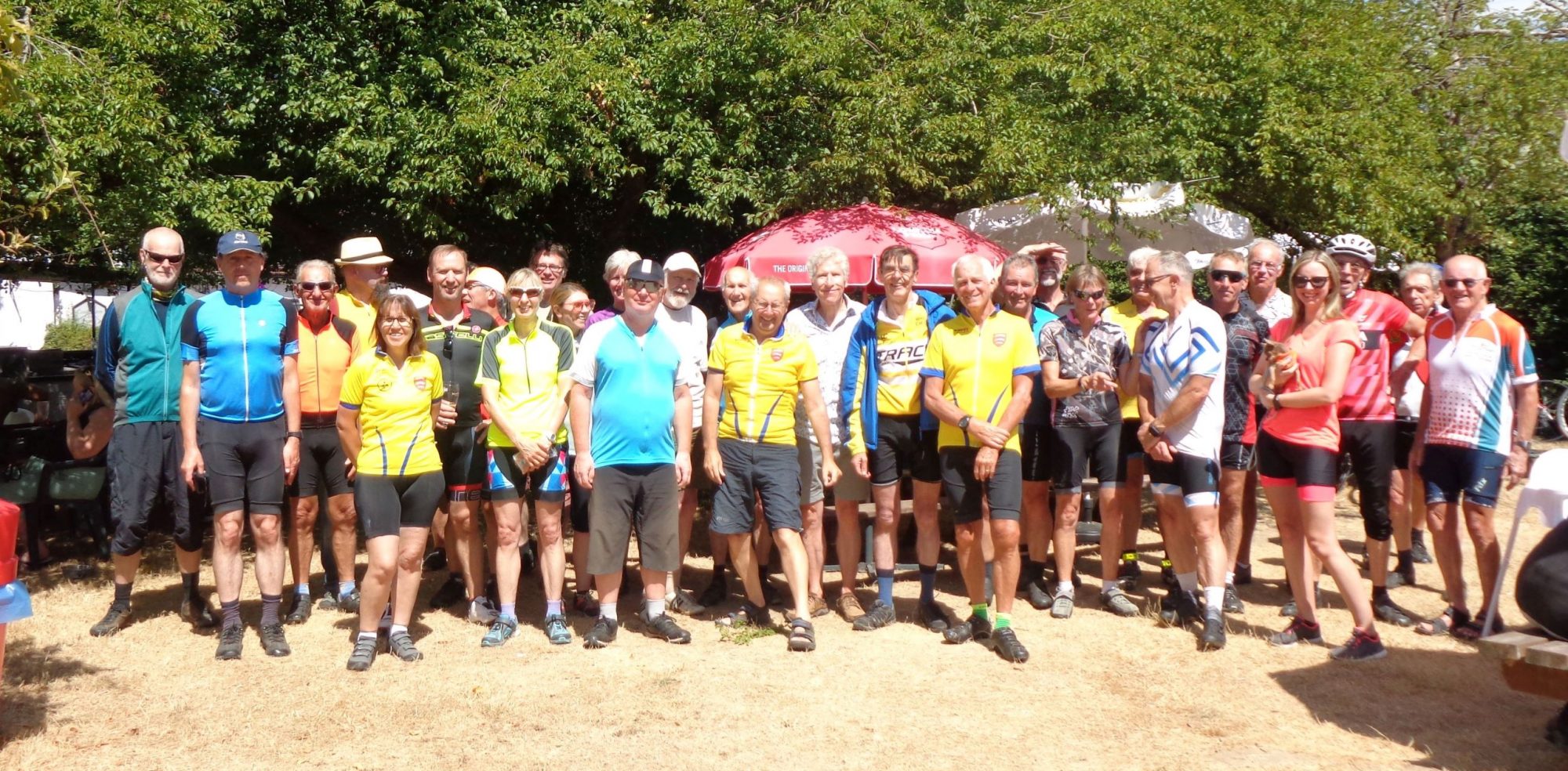Summary
It was in December 1927 that the Essex District Association (DA) of the Cyclists’ Touring Club (CTC) was born out of the Romford section of the North Metropolitan DA. The Southend section was formed in 1928 when the Romford section was reformed under its old name. The two sections were alone for only 3 months when the Chelmsford section was created. These were the halcyon days for the DA.
The Barking (sub-section of Romford) became a full section in 1929. In 1931 the Grays section reached maturity, the Ilford section followed soon afterwards and together with the Loiterers section, by the day war broke out, the DA had strengthened to 7 sections. Things were run on ‘tick over’ for the next 6 years but the best was yet to come. By the early 1950s there were the Romford, Ilford and Barking, Epping, Chelmsford, Southend, Hornchurch, Thurrock and a non-specific Photographic Section all with a strong (20 plus) riding strength.
As people became more affluent (and lazier) interest in cycling gradually waned during the 1960s. From time to time attempts were made to form new sections. There was for instance, the Basildon section and in the 1980s a Colchester section, however they both folded after a relatively short existence.
In 2005 the Essex DA consisted of groups based at Brentwood, Chelmsford, Havering (based at Upminster) and the Wickford based South-East Group.
Although the Member Group is of modest strength and rather overtaken by the trend towards mountain bikes, the CTC still has a national following of 70,000 members and in Essex DA a dedicated club-base on which to maintain a proud heritage.
In the Beginning
Commencing with the formation of the Northumberland and Durham DA in 1894 there was a steady growth in the number of District Associations to about 20 in the 1920s. All of London, including the Essex fringes, was covered by the vast Metropolitan DA. It was, I suppose, inevitable that an Essex DA would be formed sooner or later but the actual catalyst was a notice put in a Romford shop window in 1923, and also in ‘Cycling’, by one Bert Froud asking for cycling companions.
With the response a club was to become a CTC section and in 1924 an Essex Rally was held at Black Notley where discussions were opened with the Eastern Section, Metropolitan DA who suggested that a sub-section be formed and accordingly on December 6th 1924 the ‘Romford sub-section of the Eastern Section of the Metropolitan District Association of the Cyclist Touring Club’ (what a mouthful!) was formed.
In January 1925 the ‘Wayfarer Wheelers’ was wound up and later that year in December the sub-section was recognised as a full section. During the following couple of years Essex members, notably Eddie Engel and George Lane rode any miles around Essex DA. Permission was eventually given by the CTC Council and on December 3rd 1927 (everything seemed to happen in December) the DA was formed at a meeting held at the ‘Bull’ Blackmore. Well known local cyclist Thomas Grant Scarfe was elected first President with Dick Craig as Secretary. We were on our way.
At this first meeting DA colours of black and white were selected and on December 19th the Viking Road Club as an official racing off-shoot was founded.
It was of course a very different world from now into which the new DA was born. Cars and lorries were around in limited numbers but most deliveries were still made by horse and cart. Steam lorries were seen on the streets whilst in the London area around Ilford, and also when crossing into Kent by the Woolwich Free Ferry, trams and tramlines had to be contended with. There was a network of main and local railway lines, steam trains of course, covering the country. In Essex there were two lines to Maldon, the ‘Crab and Winkle’ line Kelvedon/Tollesbury, a line running from Witham via Braintree and Dunmow to Bishops Stortford and a spur from Elsenham to Thaxted.
Clubs cycles were all black and clubmen generally rode fixed wheel with similar gearing so that tight formation could be kept. The riders usually wore Norfolk style jackets with knee-breeches or plusses whilst the ladies wore a similar costume. Shorts were tentatively beginning to appear, worn by the bold.
Building Up
On January 1928 the first Essex section, Romford, was formed, a Southend section the following day, a camping section a few weeks later and Chelmsford on April 14th, then a Barking section. The DA flourished during the 1930s with a Grays section in 1930, a loiterers in 1932 and a Hard-riders in 1935. Regular events such as the Eastern Anglia Rallies (organised by Essex) at Long Melford, inter-DA socials at High Beech and lantern lectures (slide shows) by well-known speakers were organised and well supported. The DA was thriving. In 1935 we provided a team to participate in the CTC’s Royal Silver Jubilee Relay Ride who conveyed the vellum from Brentwood to Colchester. Gymkhanas and Map Reading contests were held. In 1937, amid some acrimony an Ilford section was formed from young Loiterers members. Seemingly at odds with those who raced with the Viking some of them formed the Rapier Road Club which lasted until 1972 when they merged with the Buccaneers Cycling Club (a League Club) to form the Redbridge CC. Thus is cycling history made.
All this came to an end in 1939 when World War II broke out. With much of the membership comprising young men and women section life was hit as members disappeared into the forces. Barking section was the first to close, then Southend and Ilford whilst Chelmsford existed in a suspended state. The few sections left held ‘home to tea’ runs.
Our President T Grant Scarfe had died in 1944 being replaced by tricyclist Sir Gilbertson Smith, TD, DL once Colonel of the 26th Middlesex Cyclist Volunteer Corps and also President of the Brentwood Road Club. With the end of the war many of those returning from the forces turned to the open road and freedom of the wheel. 1946 saw Chelmsford section active again and in April former Barking members Les Smart and John Harris gathered members of both Ilford and Barking sections to form the Ilford & Barking Section. Next Grays reorganised as Thurrock and Southend re-formed. By 1948 things were flourishing and the pre-war programme had been revived with a 100 mile event plus 12 and 24 hour rides, with a Map Reading and Gymkhana included. In 1949 a new section the Epping Forest was formed and this was followed by a Dagenham Section from younger Loiterers members. At the Annual General Meeting (AGM) that year Col Sir Gilbertson Smith stood down and Eddie Engel was elected to start his long reign as President.
By the early 1950s cycling was booming with membership growing in the CTC and other clubs. Petrol rationing was still in force and club rides, 20 and 30 strong, could be seen on the major roads cycling two abreast. There were numerous inns and private houses catering for cyclists, some popular ones being the ‘Hand & Crown’, High Wych, Mrs Watson at Plovers Barron, Doddinghurst, Mrs Hatfield at Good Easter and, for a while, our favourite in the Dagenham section, the ‘Wheatsheaf’ at Writtle.
Club teas were great get-togethers and you needed to be sharp if you were not to miss out on your cakes! In 1950, DA Secretary Les Smart founded the bi-monthly Newsletter which was to lead to Spotlight. In 1952 the national British Cyclists Touring Competition (BCTC) was started by Head Office and Wilf Hewitt organised the local heat. This contest continued until the 1990s with two Essex winners, the writer in 1953 and Stuart Murray in 1988. That year (1952) the DA celebrated its Silver Jubilee with a Dinner at Shoreditch Town Hall which went into memories as the “foggy dinner” when a real pea-souper descended on London and many didn’t arrive home until morning. A Jubilee commemorative booklet was issued. Things continued going well into the 50s with former members of the Dagenham Section breaking away to form the Hornchurch section (later to turn into Havering). A Hard riders section was formed and in 1959 a Basildon section was founded but only lasted a few weeks.
The Decline
But by about 1960 things were changing. Increasingly prosperity meant that people were able to afford cars such as the Ford ‘Popular’ which was coming onto the market and petrol was plentiful and cheap. These were the years of Harold McMillan’s “We’ve never had it so good” and cycling began to feel the effects. Membership dwindled in the CTC and DA where support for runs and events began to decline. Sadly, in 1962 the Romford Section, the DA’s oldest section was wound up to be followed the next year by the Hard-riders. By 1965 the Epping Forest and the Dagenham had gone and in 1967 Southend disappeared whilst the Thurrock was virtually dormant. But there were some optimists who were determined to keep going. In 1963 a South East Family Section was started by Hugh and Veronica Brown to cater for those in the Rayleigh area and in 1966 John Davis founded the Western Section, helped by former members of the Ilford & Barking which was closed down. Runs were held every fortnight and the two sections sometimes joined on bus-assisted runs to places such as Cambridge which helped to retain members’ interest.
But the decline continued to have its effect on the DA programme which shrank to little more than a ’50’ and an occasional ‘100’ with the map-reading and Gymkhana disappearing in 1966. That year an effort was made to keep former members in touch and an Old Timers Meet was held at Mill Green later developing into the Essex DA Reunion Fellowship (EDARF) much of the spadework being done by Wilf Hewitt. A sub-committee reorganised the DA Structure, abolishing the post of vice-president (there were 8) and substituting the Certificate of Merit for good service but President Eddie Engel resigned in 1967, leaving the DA headless. By 1970 the Browns had moved away and the South East Family Section collapsed. Things were looking bleak again but a few loyal members shuffled jobs around to keep the DA in being. Then in 1973 we suffered a blow when Spotlight ceased publication. It had long held the DA together under such editors as Terry Tegg, Connie and Syd Measor and Don Journet. Luckily a volunteer was found in the shape of David Hibberd who produced a runs list and newsletter and this was continued by Malcolm Stapley.
It is said that the darkest hour is before the dawn and this was certainly true in the DA’s case. With DA Secretary David Hibberd mentally preparing to wind up the DA, salvation came in the form of a petrol crisis and a change in the public attitude to a concern for the health and environment factors, so that cycling began to regain some of its lost popularity. David Hibberd, together with the Thorndykes and Malcolm Stapley started another section in the Rayleigh area which developed into the South East Group in 1975 and the following year the Western Section changed its name to the Brentwood and District. At the 1975 AGM Len Duffin was elected as our fourth President. Things were beginning to flourish again.
The Revivial
The turn-up in the DA’s fortunes came just in time for us to celebrate our Golden Jubilee in 1977 with some hope for the future. A Special Award programme was instituted, another handbook issued and a joint dinner held with EDARF at Furze Hill Hotel. The revival continued in the next year, the CTC Centenary Year in 1978, when a number of us rode to Godalming to present a scroll of loyalty to the Council meeting. We had decided against allowing the Presidency to run on and on by placing a three year (later 5 year) limit on the term of office and in 1979 John Davis replaced Len Duffin. A Harlow section was mooted although it never got off the ground but a Colchester section commenced which fairly successfully ran for three or four years. These were proving quite successful years for the DA and in 1978 Charles Comport re-commenced Spotlight magazine which has flourished ever since. The DA programme included an annual Camping weekend and Gymkhana at Danbury which continued for several years. One feature of the membership then was the number of young recruits to the pastime, apart from the leading members of the sections most were in their teens and twenties, quite a change from the present day.
We successfully organised several large scale events for the club as a whole — a Home Counties Rally at Thaxted in 1982, a BCTC final in 1983 and several Veterans Triennial Rides so that we felt we had plenty to celebrate by the time of our Diamond Jubilee in 1987. A lunch was held at Ramsden Heath Village Hall prepared by Joan Comport who had previously done much catering for the DA for our sliced shows plus organising jumble sales to raise funds. Another handbook was issued with emphasis the modern DA and as part of the celebrations we hosted the CTC National Dinner at the Churchgate Hotel, Harlow in 1988 at which, appropriately, the Essex team received trophies for winning the District Association Tourist Competition (DATC) in which we had been very successful at individual and team level in the 80s. Mention must be made of Dot Sharp who has been an outstanding DA Secretary for a record number of years until 1999 and, with husband Jack, was largely responsible for the success of the Brentwood Section during the 1980s. Our Audax UK ‘Windmill Rides’ started in 1984, have become classics and we commenced the 1990s by organising the CTC National 400k Audax; we have also continued with Essex heats of the Triennial Veterans Ride.
Here is a video showing the history of the South East Essex group:
The Presidents
Thomas Grant Scarfe 1927 – 1944

Colonel Sir Gilbertson Smith TD, DL 1945 –1948

Eddie (Edgar) L Engel 1949 – 1967

Leonard J Duffin 1975 – 1978

John L Davis 1979 – 1983

Kenneth D Thorndyke 1984 – 1986

Charles S Comport 1987 – 1991

Dot (Dorothy) Sharp 1992 – 1994

Christopher Regan 1995 – 1999

Margaret Davis 2000 – 2004

Brian Penny 2004 – 2007

Brian Taylor 2008 – 2011

John Steer 2012 – 2016

David Rowlands 2017 –


